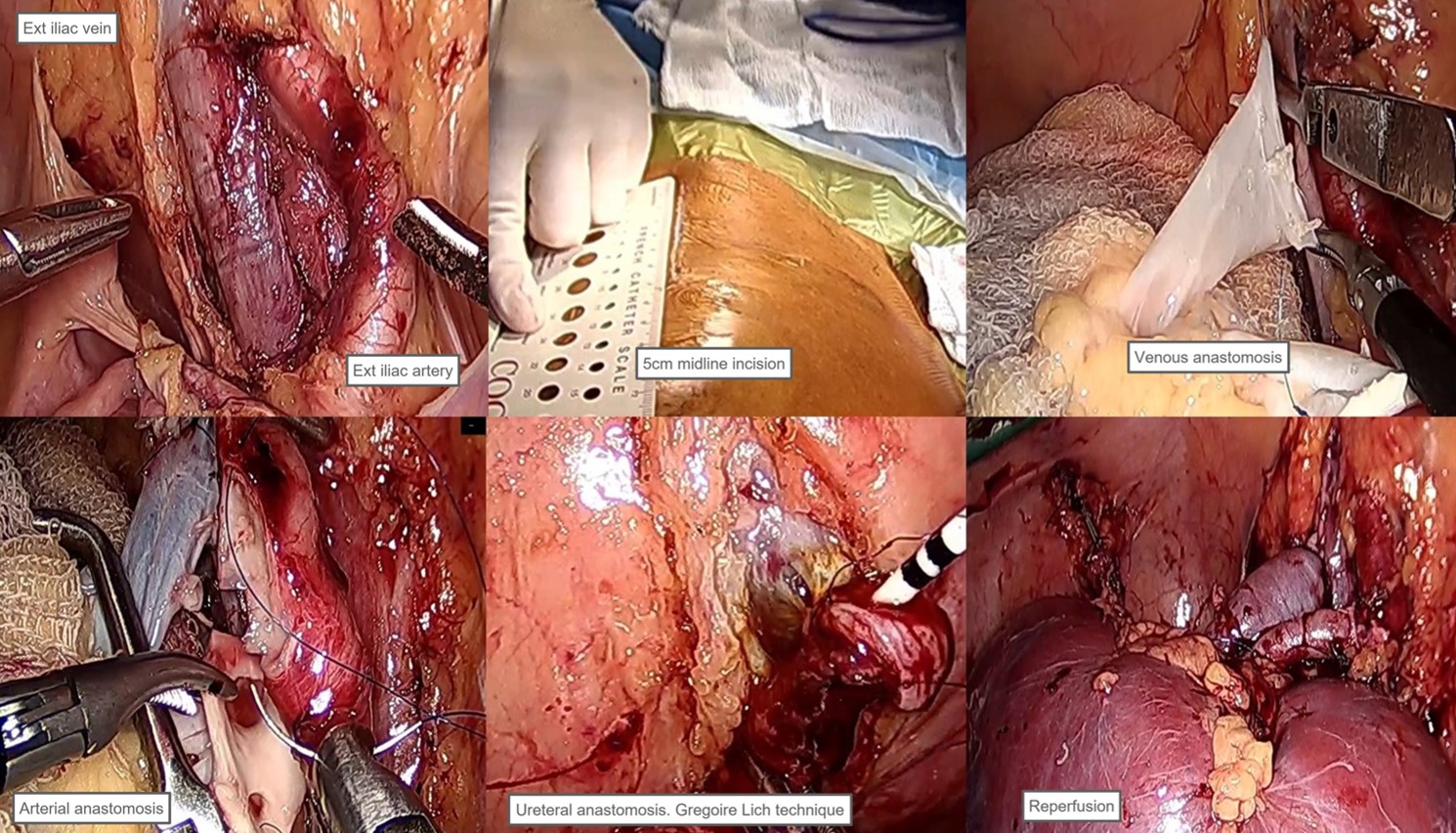Laparoscopic Kidney Transplantation : A Lost Art ?
1Surgery - Kidney and Pancreas Trasplant, ITAC by Diaverum, Buenos Aires, Argentina, 2Nephrology, ITAC by Diaverum, Buenos Aires, Argentina
Meeting: 2022 American Transplant Congress
Abstract number: 1508
Keywords: Kidney transplantation
Topic: Clinical Science » Organ Inclusive » 71 - Surgical Issues (Open, Minimally Invasive):All Organs
Session Information
Session Name: Surgical Issues (Open, Minimally Invasive): All Organs
Session Type: Poster Abstract
Date: Monday, June 6, 2022
Session Time: 7:00pm-8:00pm
 Presentation Time: 7:00pm-8:00pm
Presentation Time: 7:00pm-8:00pm
Location: Hynes Halls C & D
*Purpose: Laparoscopic surgery and currently robot-assisted surgery have transformed the current surgery paradigm, showing a lower systemic inflammatory response, less post-operative pain, smaller incisions, shorter hospital stay and better cosmesis. Recipients of a kidney transplant in which the approach of choice is conventional surgery with retroperitoneal access, either due to their comorbidities, the size of the incision or their immunosuppression, present risk factors for surgical wound complications. Laparoscopic kidney transplantation allows our recipients to access the benefits of minimally invasive techniques, which have been offered to donors for a long time. Since its publication by Rosales et al and Modi et al, this technique was displaced with the spread of robotic surgical systems. However, their high costs make them inaccessible to the health systems of developing countries. For this reason, we set out to retake the lost art of laparoscopic transplantation. Our purpose is show the first laparoscopic kidney transplantation in Argentina and it results
*Methods: Donnor: deceased donnor, male , KDPI 5% , cold ischemia time 14 hrs , left kidney, 2 arteries. Recepient: females, 54 yrs old, bmi 27.8 , membranous glomerulopathy , 6 yrs on hemodyalisis. Surgical technique : transperitoneal aproach, the surgical steps are resumed in figure 1. We used modifications of Modi´s technique : diferent incision ( midline instead of pfanestiel aproach), use of ureteral stent, and cold jacket gauze for local hypothermia.
*Results: – Perioperative results surgical time : 187 minutes. vascular anastomosis time : 39.5 minutes and the urological time was 35 minutes. The cold ischemia time of the graft was 14 hrs. The blood loss was 280 cc.
– Post-operative evolutionThe patient progressed favorably in the immediate postoperative period, with early graft function and a progressive decrease in urea and serum creatinine values without registering any medical or surgical complications. She did not require hemodialysis during hospitalization. She continued with her maintenance immunosuppression scheme, receiving discharge on the 5th post-operative day. 1 month post op Creatinine was of 1,1mg/dl
*Conclusions: Laparoscopic kidney transplantation is a complex technique that requires previous experience in transplant and laparoscopic surgery. It is a valid option for minimally invasive surgery in recipients with good results in trained teams and with costs that non developed countries health system can afford.
To cite this abstract in AMA style:
Osella FJ, Cabrera I, Walther J, Leon L, Guardia O, Rial M. Laparoscopic Kidney Transplantation : A Lost Art ? [abstract]. Am J Transplant. 2022; 22 (suppl 3). https://atcmeetingabstracts.com/abstract/laparoscopic-kidney-transplantation-a-lost-art/. Accessed November 28, 2025.« Back to 2022 American Transplant Congress

